Electrophoresis coating equipment
Electrophoresis coating equipment
Metal coating equipment
Valve coating equipment
Wheel coating equipment
Agricultural machinery coating
Pipe spraying
資訊
聯(lián)系
聯(lián)系人:Manager Ji
手 機(jī):18015563026
聯(lián)系人:Manager Pan
手 機(jī):13814861993
郵 箱:fengtai@szfengtai.com
地 址:Unit 9#, No. 28, Xingang Avenue, Jingjiang Economic and Technological Development Zone
Electrophoretic coating
1.The working principle of electrophoretic paintElectrophoresis is the process of applying a voltage to an electrophoretic coating at the anode and cathode, causing charged coating ions to move to the cathode and react with the alkaline surface of the cathode to form insoluble substances, which then
咨詢(xún)電話(huà):18015563026 / 13814861993
1.The working principle of electrophoretic paint
Electrophoresis is the process of applying a voltage to an electrophoretic coating at the anode and cathode, causing charged coating ions to move to the cathode and react with the alkaline surface of the cathode to form insoluble substances, which then deposit on the surface of the workpiece. It includes four processes:
1) Electrolysis (decomposition)
At the beginning of the cathodic reaction, it is an electrolysis reaction that generates hydrogen gas and hydroxide ions OH. This reaction causes a highly alkaline boundary layer to form on the cathode surface. When the cation and hydroxide ions react to form an insoluble substance in water, the coating deposition occurs. The equation is: H2O→ OH+H
2)Electrophoretic movement (swimming, migration)
Cationic resin and H+move towards the cathode under the action of an electric field, while anions move towards the anode.
3)Electrodeposition
On the surface of the coated workpiece, the cationic resin interacts with the cathode surface to neutralize and precipitate without sediment, depositing on the coated workpiece.
4)Electroosmosis (dehydration)
The coating solid and the coating film on the surface of the workpiece are semi transparent, with many capillary pores. Water is discharged from the cathode coating film, causing dehydration of the coating film under the action of an electric field, while the coating film adsorbs on the surface of the workpiece, completing the entire electrophoresis process.
2.The process route and function of epoxy electrophoretic paint
Epoxy type electrophoretic paint is mainly used in large industrial enterprises, with high requirements for anti-corrosion and rust resistance. It comes in various colors such as black, gray, red, yellow, etc. It is mainly used in the automotive industry, as well as in the bicycle industry, motorcycle industry, home appliance industry, etc. The electrophoretic paint film is opaque.
1)Process route
Hang→ Defatting; Hot water washing; Cold water washing; Table Adjustment; Phosphatization; Water washing; Water washing; Pure water washing; Electrophoresis; Recycling→ Recycling→ Pure water washing; Enter the oven→ Lower hanging (rusty workpieces need to be treated with rust removal before electrophoresis)
2)The role of each workstation
(1) Degreasing: Remove oil stains from the surface of the workpiece.
(2) Water washing: Clean the residual liquid on the surface of the workpiece.
(3) Surface activation of the workpiece to facilitate the formation of a phosphating film on the metal surface.
(4) Phosphating: The phosphating film has a porous crystal structure, which plays a good role in enhancing the bonding ability between the coating and the metal and preventing corrosion.
(5) Pure water washing: To prevent the acid, alkali, and salt from the previous process from entering the electrophoresis tank and contaminating the paint tank.
(6) Electrophoresis: Under the measurement of voltage and time, an electrophoresis film is formed.
(7) Recycling: Washing with U/F solution reduces paint waste and lowers production costs.
(8) Baking: Cure the paint film at high temperatures of 160 ℃ to 180 ℃.
- 上一篇:Electrophoresis of the whole bus
- 下一篇:沒(méi)有了!



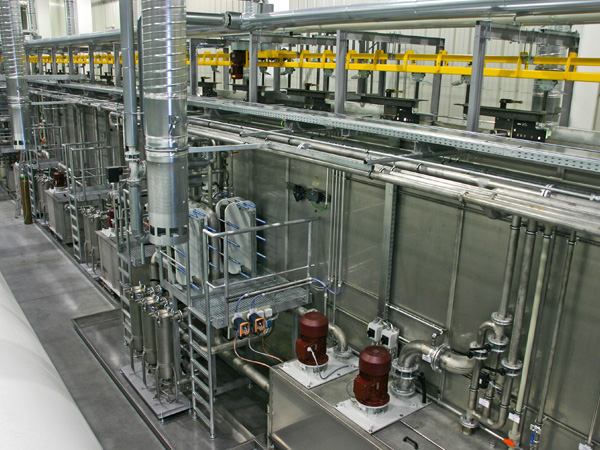

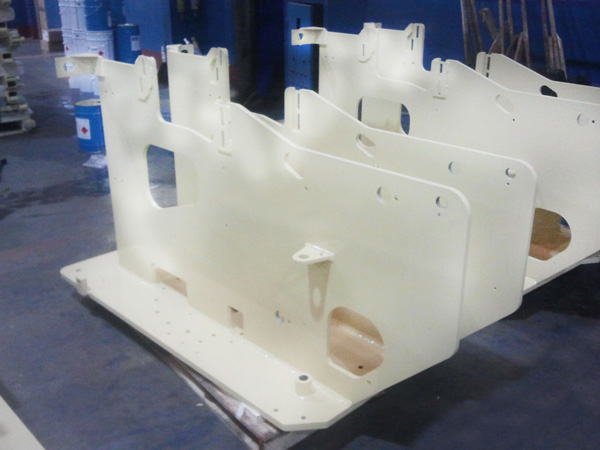
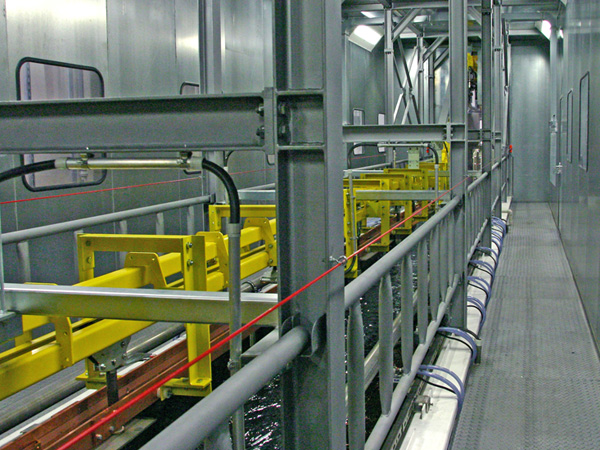


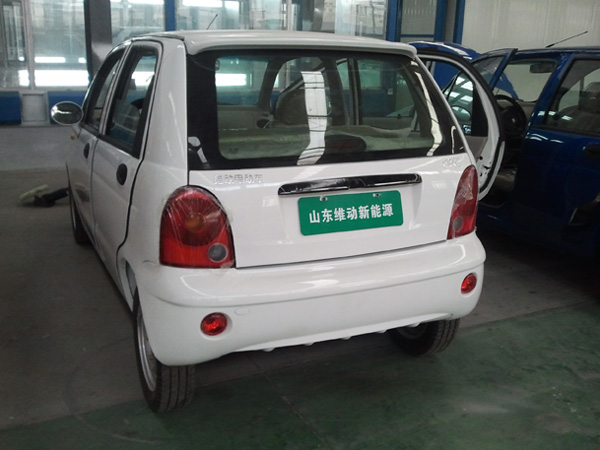
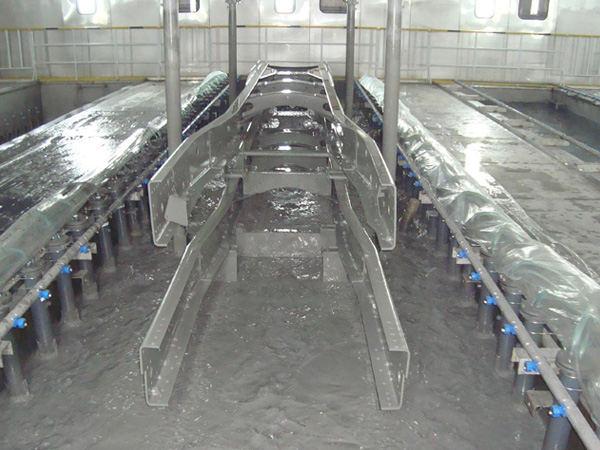


 QQ客服
QQ客服
